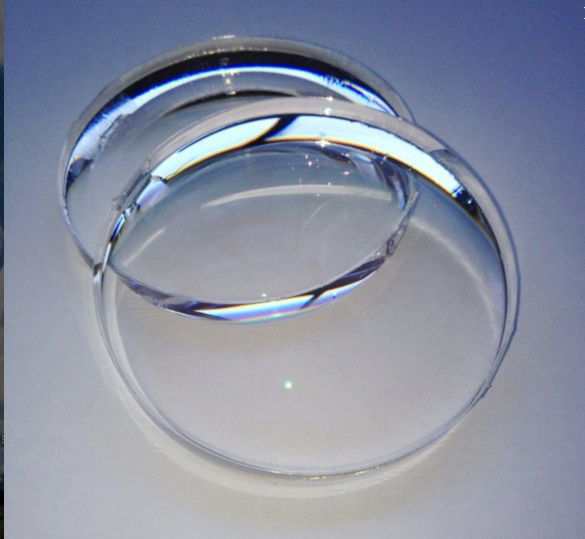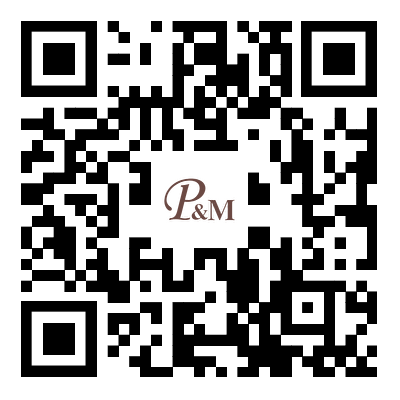Coating processing of PC lenses
2025-08-01

The coating process for PC lenses (polycarbonate lenses) aims to enhance their optical performance, durability, and functionality, primarily encompassing the following key steps and technologies:
1. Pretreatment (Cleaning and Activation)
Ultrasonic Cleaning: Removes contaminants such as grease and dust from the lens surface.
Plasma Treatment: Enhances coating adhesion by bombarding the surface with plasma.
Chemical Treatment: Further cleans and activates the surface using solvents or acidic or alkaline solutions.
2. Base Coating Process
Primer Coating
Purpose: Fills minor irregularities on the PC surface and improves the adhesion of subsequent coatings.
Method: Spin coating, dip coating, or spray coating. Commonly used materials are silane or polyurethane primers.
Curing: UV curing or thermal curing (60–80°C).
Hard Coating
Purpose: Improves scratch resistance (PC is inherently soft).
Materials: Silicon dioxide (SiO₂), silicone resin, or acrylate.
Process: Dip coating or spray coating followed by UV curing (high-intensity ultraviolet light irradiation).
3. Functional Coating Process
Anti-Reflective Coating (AR Coating)
Purpose: Reduces reflection and increases light transmittance (e.g., multilayers of metal oxides such as MgF₂ and SiO₂).
Process: Vacuum evaporation (physical vapor deposition (PVD)) or magnetron sputtering, requiring multiple layers (each layer thickness is 1/4 the wavelength of light).
Anti-fouling and Water-Repellent Coating (Hydrophobic/Oleophobic Coating)
Purpose: Anti-fingerprint, easy to clean.
Material: Fluorosilanes (e.g., perfluoropolyether).
Process: Spray coating or vacuum deposition, often combined with AR coating.
Anti-Blue Light Coating
Purpose: Absorbs or reflects harmful blue light (wavelength 400–450nm).
Material: Metal oxides or organic dyes.
Process: Coated simultaneously with AR coating or applied separately.
Anti-Static Coating
Purpose: Prevents dust absorption.
Materials: Conductive polymer or metal-doped coating.
4. Curing Technology
UV curing: Suitable for organic coatings (such as hard coatings), fast and efficient (curing in seconds).
Thermal curing: Used for some high-temperature stable coatings (such as certain primers).
Electron beam curing: Used in a few high-precision applications.
5. Post-Processing and Testing
Annealing: Eliminates internal stress and improves coating stability.
Quality Testing:
Adhesion testing (Bicester method).
Abrasion resistance testing (Taber abraser).
Optical performance testing (spectrophotometer for transmittance and reflectance).
Key Challenges and Innovation Directions
Adhesion Issues: PC surface is hydrophobic, requiring plasma treatment or primer optimization.
High-temperature resistance: PC has a low melting point (approximately 145°C), requiring a low-temperature curing process.
Environmentally friendly processes: Water-based coatings replace solvent-based coatings to reduce VOC emissions.
Nanotechnology: For example, the sol-gel method can be used to produce nanoscale hard coatings.
Typical Applications
Eyeglass lenses: AR + hard coating + hydrophobic composite coating.
Automotive headlight covers: Weather-resistant hard coating.
Electronic screen protectors: Anti-glare + antistatic coating.
The following is a detailed analysis of the PC lens hardening process:
1. The core principle of the hardening process
Base treatment: Clean the lens surface through chemical or physical methods to remove grease and impurities and enhance the adhesion of the hardening layer.
Hard coating: Coat the lens surface with a high-hardness material (such as silicone resin) and form a wear-resistant layer through curing.
Curing technology: UV curing or thermal curing is commonly used to make the coating tightly bonded to the PC substrate.
2. Main hardening methods
(1) Dip Coating
Process: Immerse the lens in the hardening liquid → Pull at a constant speed to control the thickness → UV/thermal curing.
Advantages: Uniform coating, suitable for mass production.
Key points: Hardening liquid formula (including nano-silica and other ingredients) and curing conditions (UV intensity, temperature).
(2) Spin Coating
Process: Fix the lens on a rotating table, add the hardening liquid → High-speed rotation and evenly spin → Curing.
Advantages: Controllable thickness, suitable for high-precision requirements.
Disadvantages: Large amount of material waste.
(3) Vacuum coating method
Technology: SiO₂ and other inorganic hard films are deposited on the surface through PVD (physical vapor deposition).
Features: Extremely high hardness (close to glass), but high cost and requires special equipment.
(4) Plasma treatment
Function: Cleans the surface and activates molecules through plasma to improve coating adhesion.
Application: Often used as a pretreatment or in combination with the dipping method.
3. Materials for hard coating
Silicone resin: The mainstream choice, forming a cross-linked network through UV curing.
Nanocomposite materials: Such as nano-SiO₂ and Al₂O₃ dispersed in the resin, significantly improving hardness.
Polyurethane acrylate: Good flexibility and strong impact resistance.
4. Key process parameters
Curing conditions: UV wavelength (usually 365nm), energy (500-1000mJ/cm²), temperature (60-80℃).
Coating Thickness: Generally 2-5μm. Thicker coatings are prone to cracking, while thinner coatings may result in insufficient wear resistance.
Environmental Control: Dust-free room (ISO Class 7 or higher), humidity 40-60%.
5. Quality Inspection Standards
Abrasion Resistance: Taber Abrasion Test (CS-10 grinding wheel, 500g load, haze change ≤5% after 1000 cycles).
Adhesion: Grid Knife Test (ASTM D3359, 4B or higher).
Hardness: Pencil Hardness Test (≥3H is acceptable).
Weather Resistance: UV Aging Test (no cracking or yellowing after 500 hours).
6. Common Problems and Solutions
Coating Delamination: Optimize surface treatment (such as plasma activation) or adjust curing parameters.
Surface Orange Peel: Caused by excessive viscosity of the hardening solution or uneven spin coating speed; adjust the formulation or process.
Air Bubbles: Vacuum degassing or reduce the pull/spin speed.




